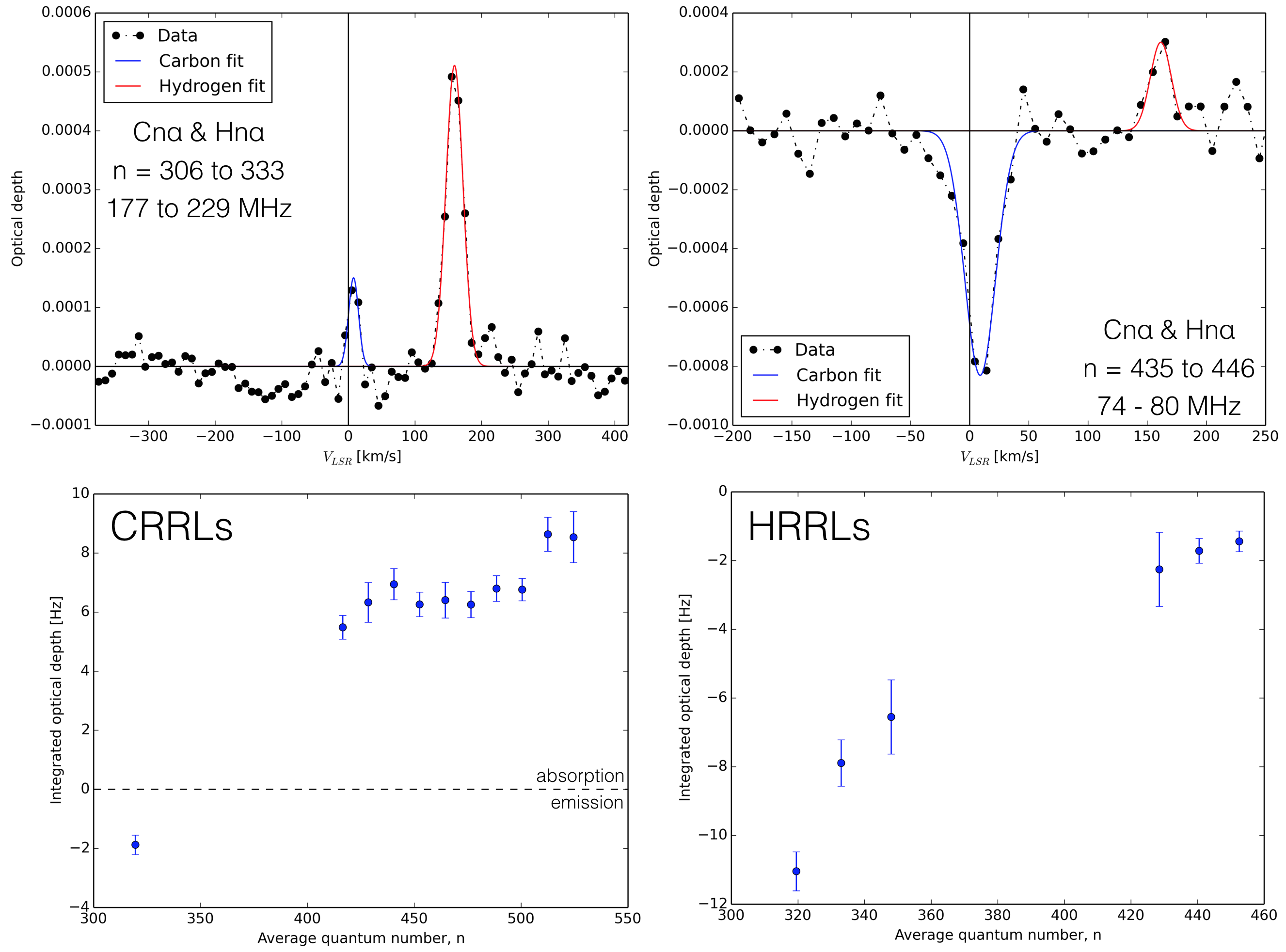Daily Image
07-09-2017Detections of low-frequency radio recombination lines with the EDA, an SKA1-Low prototype
| Submitter: | Emma Alexander |
| Description: | Radio recombination lines (RRLs) arise from transitions between highly-excited levels of atoms in the interstellar medium (ISM). Low-frequency (<1 GHz) RRLs can be used to determine properties of the cold, diffuse parts of the ISM. The Square Kilometre Array (SKA) will open up the opportunity to study these lines, and the regions they originate from, in unprecedented detail; see Oonk et al. (2014) for a full review. As the SKA heads into the critical design review stage of the engineering process, on-site testing is crucial. For example, the Engineering Development Array (EDA) is an SKA1-Low prototype system in Western Australia (Wayth et al., 2017). In this summer project, an exploratory 3-hr spectral line observation was taken by the single-station EDA towards the Galactic centre, although without a dedicated calibrator scan. Normalised spectra in optical depth units were produced, and multiple known RRLs were stacked after conversion to LSR velocity. The top two panels show two of these stacks at different frequency ranges, with Gaussian curves used to fit the lines. Carbon alpha and beta RRLs are observed in absorption between frequencies of ~40-95 MHz, and carbon alpha lines are seen in emission between ~180-230 MHz. Hydrogen alpha RRLs are seen in emission between ~70-95 and ~140-230 MHz (intermediate frequencies are dominated by RFI). The central velocities and widths of the lines are consistent with previous studies of the Galactic centre (e.g. Kantharia & Anantharamaiah, 2001). The lower two images show how integrated optical depth varies with quantum level, n, for both carbon and hydrogen RRLs. While broadly consistent with previous similar investigations, and therefore encouraging as a proof of concept, a thorough exploration of the calibration is needed first before we can confidently constrain properties such as the electron density and temperature of the regions that the lines originate from. |
| Copyright: | Emma Alexander, Jess Broderick |
| Tweet |  |
